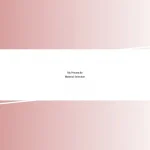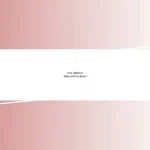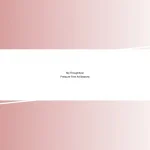Key takeaways:
- Creative blocks often arise from fear, stress, and pressure, making it essential to recognize and acknowledge these feelings.
- Identifying personal triggers, such as chaotic environments and fatigue, helps create a conducive space for creativity.
- Implementing techniques like changing scenery, having a creative routine, and collaborating with others can effectively overcome creative blocks.
- Reflecting on growth and embracing ongoing creativity fosters resilience and nurtures inspiration in the artistic journey.

Understanding Creative Blocks
Creative blocks can feel like a thick fog that rolls in unexpectedly, clouding our inspiration and making the simplest tasks feel monumental. I remember a period when I sat in front of a blank canvas, frozen, wondering if I’d ever find my way back to the joy of painting. It’s frustrating, isn’t it? That moment when creativity seems to slip through our fingers like sand.
Often, these blocks stem from fear—fear of judgment, fear of failure, or even fear of success. I’ve found myself questioning whether my ideas are good enough, and in those moments, I can spiral down a rabbit hole of self-doubt. Have you ever felt like that? It’s important to recognize that these feelings are common among many creators, and acknowledging them is the first step towards finding a way out.
Sometimes, the pressure to produce can be overwhelming, leading to an internal conflict that freezes creativity. I’ve had days where the more I tried to force ideas, the more they evaded me, leaving me feeling defeated. It led me to wonder: do our expectations stifle our artistic flow? Understanding this relationship between pressure and creativity can be a game-changer in overcoming these blocks.

Identifying Personal Triggers
Recognizing the specific triggers that lead to creative blocks is crucial. I’ve noticed that certain environments, like chaotic spaces or loud coffee shops, can instantly undermine my focus. Each time I attempt to create under less-than-ideal conditions, I feel my ideas slip away. It dawned on me that maintaining a conducive environment is vital.
Here are some common personal triggers to identify:
- Stressful situations: High-pressure work deadlines can sap my creative energy.
- Perfectionism: I often find myself paralyzed by the need for everything to be “just right.”
- Comparison: Scrolling through social media can sometimes ignite feelings of inadequacy.
- Isolation: Spending too much time alone can lead to feelings of disconnect and stifle inspiration.
- Fatigue: When I’m exhausted, my creativity diminishes, and I struggle to tap into my imagination.
Understanding these triggers allows me to create a more supportive atmosphere for my creativity.

Techniques to Overcome Blocks
When it comes to overcoming creative blocks, experimenting with different techniques can yield surprisingly powerful results. One approach I’ve found particularly effective is changing my scenery. I recall a day when I took my sketchbook to a nearby park instead of my cluttered studio. Just the act of sitting among trees and hearing the rustle of leaves sparked ideas that had been dormant for weeks. It’s amazing how a simple shift in environment can shake off the dust of stagnation.
Another technique that works wonders for me is establishing a creative routine. I set aside dedicated time each morning for free writing, allowing my thoughts to spill onto the page without judgment. This practice serves as a warm-up, much like stretching before a workout. When I embrace the freedom of expression without any goals, I often uncover hidden gems of inspiration that lead me back to my creative flow.
Lastly, I’ve discovered that connecting with fellow creators can be a game-changer. I often reach out to friends for brainstorming sessions. These casual meet-ups unleash a wave of fresh ideas. One memorable afternoon, we took a long walk while discussing our projects, and I left feeling invigorated. It’s fascinating how collaboration and conversation can dissolve the isolation that often accompanies creative blocks.
| Technique | Description |
|---|---|
| Change of Scenery | Shift your environment to inspire new ideas. |
| Creative Routine | Establish a regular time for free expression. |
| Connect with Others | Engage in discussions with fellow creators for fresh insights. |

Establishing a Creative Routine
Establishing a creative routine has been transformative for me. I remember the early days when I’d wait for inspiration to strike, often wasting time in frustration. Now, I’ve realized that setting specific times for creative work acts as a mental cue. It’s almost like a secret handshake with my imagination, signaling that it’s time to play.
I try to honor my routine with rituals that ground me. Whether it’s brewing a cup of my favorite tea or lighting a candle, these tiny actions create a cozy atmosphere that beckons my creativity. When I sit at my desk, ready to write, I can’t help but feel a spark of excitement. The anticipation of what I might create is thrilling, reminding me that routine doesn’t have to be dull if imbued with intention.
What’s fascinating is how flexibility plays a crucial role in my routine. If life gets hectic, I adapt without guilt—sometimes it means a five-minute doodle in my notebook instead of a full hour. I’ve found that embracing this fluidity not only eases pressure but also keeps my creativity alive. It invites spontaneity into my structure, creating a harmonious balance that fuels my artistic journey.

Seeking Support and Collaboration
Reaching out for support has been a revelation in my journey through creative blocks. I remember the first time I attended a local writers’ group; I was a bundle of nerves. Yet, as we shared our struggles and triumphs, I realized that many of us felt isolated in our creative process. It felt liberating to hear that I wasn’t alone in my frustrations. This sense of community became a lifeline, reminding me that we all share similar battles.
I’ve also found that collaboration can breathe new life into weary projects. A particularly memorable experience was partnering with a graphic designer for a concept I had been stuck on. As we bounced ideas off each other, I felt a flicker of excitement reignite. It was as if sharing the burden allowed me to see my work from a fresh angle. It makes me wonder—how often do we limit ourselves by trying to carry the entire weight of our creativity alone?
Talking things through can sometimes unlock pathways I never knew existed. I had a late-night chat with a poet friend about my current block, and just listening to her perspective on vulnerability opened my eyes. I realized that sharing my fears was a powerful tool, and suddenly, I was filled with new ideas and courage. It’s amazing how simply seeking support can transform my mindset, allowing the creative flow to return in unexpected, delightful ways.

Reflecting on Progress and Growth
Reflecting on my progress and growth in creativity often feels like peering into a well-worn journal, filled with notes of both struggle and triumph. I still remember the moments when self-doubt clouded my vision. Looking back now, it’s surprising to see how each obstacle has ultimately fueled my growth. What once felt overwhelming has transformed into stepping stones that paved the way to greater self-awareness and creativity.
I’ve realized that my journey is much like gardening; I’ve planted many seeds of ideas, and some take root while others wither. There were times when I felt frustrated over a stalled project, believing I’d make no progress. Then, often in the quiet moments, I’d see how those periods of stagnation allowed me to grow as a creator, uncovering new depths to my artistic voice instead. Can we truly appreciate the blooms without acknowledging the barren stretches?
Reflecting on these growth phases brings a sense of gratitude. Each struggle taught me something valuable, whether it was the importance of patience or the thrill of daring to experiment. I find myself often asking: how did I get here? The answer lies in embracing both the peaks and valleys. It’s a reminder that every experience, cherished or challenging, has shaped the path I travel as a creative.

Embracing Ongoing Creativity
It’s funny how ongoing creativity often feels like a dance, sometimes flowing gracefully and other times stumbling through missteps. I remember a particularly uninspired afternoon spent in my studio, looking at blank canvases almost glaring at me. Rather than wallowing in frustration, I turned on some music that transported me back to a moment of pure joy. Suddenly, I found myself moving, painting not with precision but with wild abandon. That spontaneity sparked ideas I hadn’t anticipated, reminding me that creativity thrives in those unexpected bursts of freedom.
I often find that nurturing ongoing creativity involves a willingness to experiment and play. One evening, I decided to step out of my comfort zone and explore a medium I’d never touched before—collage. As I cut and pasted random images, I felt a rush of liberation. In that chaos, my subconscious began to connect dots I hadn’t realized existed. It’s remarkable how breaking away from the norm can unlock hidden pathways, leading us to fresh ideas and perspectives. Isn’t it fascinating how sometimes the act of creating, rather than the outcome, holds the key to ongoing inspiration?
There are days when maintaining creativity feels almost like tending to a fire, requiring regular attention and care. I’ve learned that engaging with different forms of art can reignite my passion. Recently, I attended a pottery workshop, and as I molded the clay, I found myself lost in the tactile experience. The pressure of my fingers against the cool surface transformed into a meditative focus. What I’ve discovered is that these moments of exploration feed my creative well and expand my palette. Isn’t it worth it to seek out new experiences, even when they seem unrelated to our primary work?














